Diablo 3 Reaper of Souls hands-on: taking the fight to the angel of death
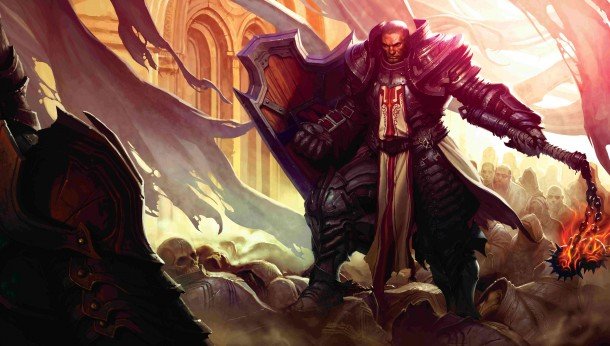
This feature originally appeared in PC Gamer UK issue 258 .
Diablo is hardly one of gaming's greatest villains, let's face it. His schemes are consistently thwarted, he's one of the easiest boss fights in the series, and he looks like a big red dinosaur. The sinister Malthael takes his place as the big baddie in Diablo III's first expansion, Reaper of Souls. Bedecked in black robes, the angel of death glides about on a mist of captive spirits, wielding a pair of soulsevering sickles. In the details of his gothic finery, Blizzard discovered the tone they wanted to set for 'Act V' of their epic action-RPG.
“The choice of villain is a huge departure,” says lead writer Brian Kindregan. "You always fought demons. Now you're fighting an angel. As soon as we made that choice everything else flowed from that.” Malthael is the fallen angel of wisdom who's claimed control over matters of life and death on the mortal plane, and stolen the indestructible black soulstone that houses Diablo's spirit. More worryingly, he's moved humanity onto the scary side of his 'naughty or nice' list and laid waste to the city of Westmarch to raise an army from its remains. In the opening of Act V, set after Diablo's defeat, players must retake the city using the classic Diablo technique of hitting everything until it's dead, levelling up to unlock new ways to make things dead, and looting the world for items to make things dead faster.
Westmarch might be the grimmest place I've visited in a videogame. Its grey streets are lined with the dead. Cold blue lanterns illuminate weathered cathedrals, cracked flagstones and half-collapsed statues of old heroes.
It's the first time that Blizzard have attempted a randomised city environment. Experiments with Diablo III's Caldeum bazaar didn't work out, but tech updates to Reaper of Souls let them slot detailed city streets into procedurally generated formations. I fought hordes of glowing spirits at a crossroads, and found an alleyway carpeted in mounds of corpses. In a small house I discovered a madman who'd decided to devote himself to Malthael in the hope that he might survive the cull. You can now transition between indoors and outdoors without a loading zone, giving the place a more coherent feel than many of Diablo III's vanilla environments. More than anything, the city reminds me of the darker regions of Diablo II.
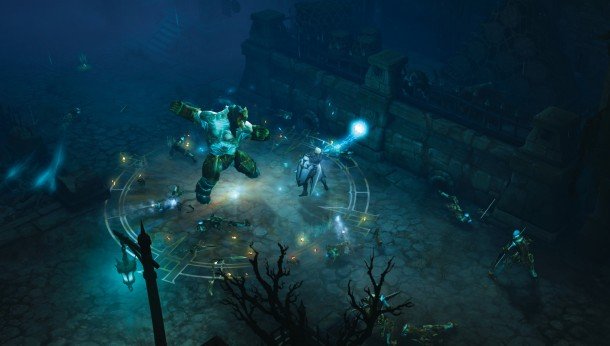
Don't expect any sunshine and rainbows in Reaper of Souls' other areas, either. The Bloodmarsh is an old bog that hides 'hints of ancient civilisations'. I'm more excited about the Pandemonium Fortress, an insane castle at the centre of 'the scar of creation's birth'. It's a place suspended between heaven and hell that Diablo II players have visited very briefly in Act IV, which used to house the now-destroyed Worldstone. There'll be plenty to dig into here for Diablo lore fans.
Blizzard aren't showing those zones just yet, however. Instead I fought through a few blocks in their doomed city. Malthael's ghosts and Death Angels loiter on every corner, looking for souls to reap. They had a hard time reaping mine. I tried out Reaper of Souls' new class, the Crusader: a hulking mass of Teutonic iron armed with a flail, a shield and a fanatical love for reducing evildoers to mulch. He plays like the Paladin's brawnier brother. Where Diablo and Diablo II's knight class specialised in auras that could heal team-mates, the Crusader prefers dropping bolts of holy lightning, and sometimes his own armoured body, onto enemies' heads. Blizzard describe him as a 'mid-range melee' class, but there's a bit of wizard in his DNA. Fist of the Heavens brings a pillar of smouldering energy down anywhere on the battlefield. Smaller bolts skitter out from the point of impact to shock nearby foes. Consecration sets the area around the Crusader on fire, which heals nearby allies and harms nearby enemies. Both are excellent setups for Falling Sword, a slow-recharge ability that turns the Crusader into a mobile artillery strike. He vanishes into the sky and crashes back to earth at your chosen point of impact. Weaker enemies in the dropzone are obliterated outright, the rest take massive damage.
The biggest gaming news, reviews and hardware deals
Keep up to date with the most important stories and the best deals, as picked by the PC Gamer team.
It didn't take long to adjust to the Crusader's combat style. Of the skills available in the demo, few targeted just one enemy. I would circle an incoming mass of monsters to get them to clump up, zap this ball of creatures with Fist of the Heavens, scatter most of them with Falling Sword and then finish anyone left with Consecration. I'd occasionally hit a few creatures with the flail when they got close, but much of combat was about managing kill zones. I'd spread out multiple bolts to engage hordes of small enemies, and stack them onto one spot to take out generals or super-powered mobs. It's easy to imagine the Crusader serving as the central rock in a co-op group, throwing out righteous spells to thin enemy ranks and dive-bombing bosses with his explosive bellyflop.
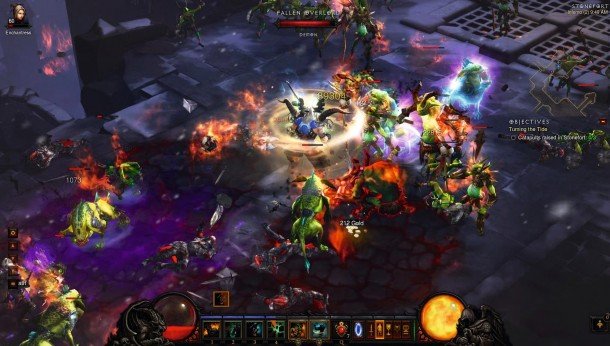
In Reaper of Souls, Diablo's combat feels as good as it ever has. Whether you're using searing spells or big slabs of metal to do the job, Diablo III is still a game about making things explode. The moment-to-moment satisfaction of battle flows from the decades Blizzard have spent honing the art of making every click feel deadly, but it's the makeup of its randomised mobs that fascinates and holds players for hours on end. The villains that come pouring out from behind your monitor's bezels induce a charged emotional state that vibrates between anxiety, sudden terror and relief. Reaper of Souls' swarming mini-foes harass. Its randomised hero enemies create spikes of fear. Your job as player is to engineer your own moments of catharsis using the game's varied and powerful skills. Big, killer abilities like the Crusader's Falling Star serve as excellent enablers. "You get into your hunter-killer mode,” says Martens, “your lizard brain, as it were. That's not something we want to fight against."
The lizardy pleasure of executing droves of enemies gives way to genuine challenge at high levels. The randomised cocktail of superpowers attached to glowing yellow ubermobs can lock off areas of the battlefield, wrap monsters in temporary invincibility bubbles, double their speed or cause long-range mortar bombardments to spew continuously from the top of their heads. Sometimes all at the same time. A top level Diablo III fight feels more like bullet hell than a traditional action-RPG. Reaper of Souls' denizens will have powers that will play into this nicely, such as Crossfire, which lays a glowing grid of death onto the battlefield. “There's a timing component,” explains game director Josh Mosqueira. “The beams grow over time. You have to figure out where in this grid of death you can stand and not die.”
The randomisation of creatures, enemy generals and their special abilities can throw surprising new challenges at the most experienced of players. It's an important part of Diablo III's replayability, and forms the basis of the new Loot Run mode. This uses locations, creatures and bosses from the entire game to conjure a 15-minute dungeon from scratch. It's designed to present a varied shortsession alternative to the two-hour acts, and to drop loot at a greater efficiency than the popular levelling runs plotted by the Diablo III community. One route through Act III, devised by notable power-leveller, Alkaizer, has become the de facto way to play for level 60 characters. Blizzard want to mix that up without introducing monster combinations that are too unfair.
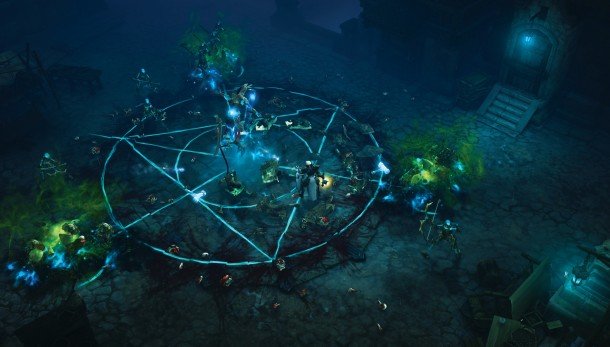
“The randomisation is all hand-touched. We don't allow bad combinations to go out there,” says lead content designer Kevin Martens. “Now we're just finding interesting combinations. It's one of the core ways that people can try different tactics, but it's also just fun to see the variety.” The team say that standout combinations so far have placed the elephant-sized bulls of Act II's open fields into narrow dungeon corridors, putting players right in the path of their devastating charge attack. Martens describes how the team filled a zone with Wretched Mothers – who vomit out zombies every few seconds – and Skeleton Summoners, who raise skeletons to mob player characters. He describes the resulting scrabble through hordes of minions to kill the Summoners as the most fun he's had in Diablo III in a year of playing.
The balance of loot that drops throughout Diablo III is also set to change significantly, in a free update that will go live just before Reaper of Souls releases. Currently, a tiny percentage of the loot that drops in a given run will be relevant to your character, a problem that Blizzard hope to fix with an overhaul they call 'Loot 2.0'. This will introduce 'Smart Drops' that will be tailored to the particular stats of the looting character. The rate of powerful Legendary drops will increase slightly, and you're guaranteed Legendary drops the first time you defeat certain bosses.
Blizzard also want Legendaries to give your characters more than a stat increase. As well as a unique appearance and some fancy particle effects, they'll make interesting additions to your character's skills. A wizard's staff could add a small chance to turn every slain enemy into a fire-breathing Hydra. Another might summon a treasure goblin when equipped. Mosqueira has his own favourite: “There's one item that, when they equipped it, would summon three wolves, as opposed to one wolf. The wolves are cool, but three wolves are way cooler than one wolf, so I switched my build.”
The Reaper of Souls patch will add another artisan character who'll sit alongside the Blacksmith and the Jeweller at home base. The Mystic will be able to enchant items, which lets you re-roll a stat bonus of your choosing on a given item and pick from a few randomly generated results. If you're a Barbarian geared for strength who finds a monstrous sword of +100 intelligence, you can take it to the Mystic and try to swap it for a strength buff. Blizzard are still fine-tuning the specifics, such as the cost, and whether you can re-roll more than one affix, or re-roll one affix multiple times, but the purpose of the system is clear: if you use enchanting to tailor your items to your build, you won't have to go to the auction house.
Blizzard have publicly stated that their online trade centre, which lets players sell each other items for in-game gold and real money, isn't working as intended. The high gear requirement of level 60 play has pushed players to the store, where they can cherry-pick the best items for their characters instead of waiting for a series of unlikely drops.
The intention behind the targeted drops and crafting systems are pretty obvious, then. “We want the auction house to be your last resort,” says Kindregan. “You play the game to have the fun, get the loot. If you can't find one particular thing, you craft it. If you can't craft it, OK, then you go to the auction house.” Since first publication of this article, Blizzard have gone as far as to announce the complete shutdown of the auction house in March 2014.
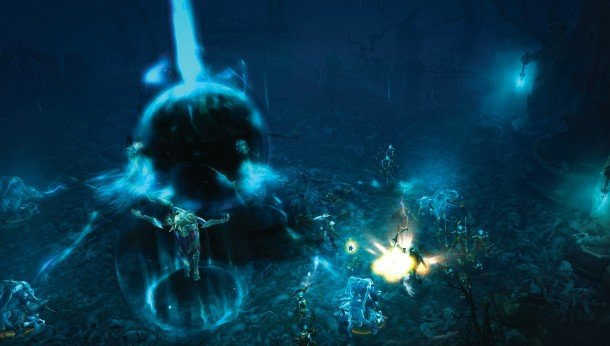
Reaper of Souls is also designed to encourage players to try multiple characters. The Paragon system – a series of bonus levels starting at level 60 that increase the likelihood of high-level item drops – will be expanded to include every character on your account. Your level 5 Demon Hunter will benefit from all the hard work your level 60 Barbarian's been putting in. Reaper of Souls also raises the level cap to 70, adding ten new abilities, passive skills and abilitymodifying runes to all five existing classes. To take a Crusader into Westmarch, you'll have to level him through the first four Acts. Otherwise, any character that's defeated Diablo can take on Malthael and his denizens in Act V.
The add-on isn't just about new stuff, it's a significant rebalance of Diablo III's core systems. In its aesthetic return to the gothic roots of the series, the revamped itemisation and the sidelining of the auction house, Reaper of Souls feels as much like a retrofit as an expansion. That's just what Diablo needs. Though it will still be always-online, and there will still be an item store, Blizzard want to move back to core principles to keep the 12 million who bought Diablo III playing. The complications of a player-run economy are just a distraction, after all. The reason people play is simple: “You should be killing monsters,” says Martens. “That's the best thing.”
Part of the UK team, Tom was with PC Gamer at the very beginning of the website's launch—first as a news writer, and then as online editor until his departure in 2020. His specialties are strategy games, action RPGs, hack ‘n slash games, digital card games… basically anything that he can fit on a hard drive. His final boss form is Deckard Cain.


